2nd Sunday of Easter Year A
Divine Mercy Sunday
Sunday April 12, 2026
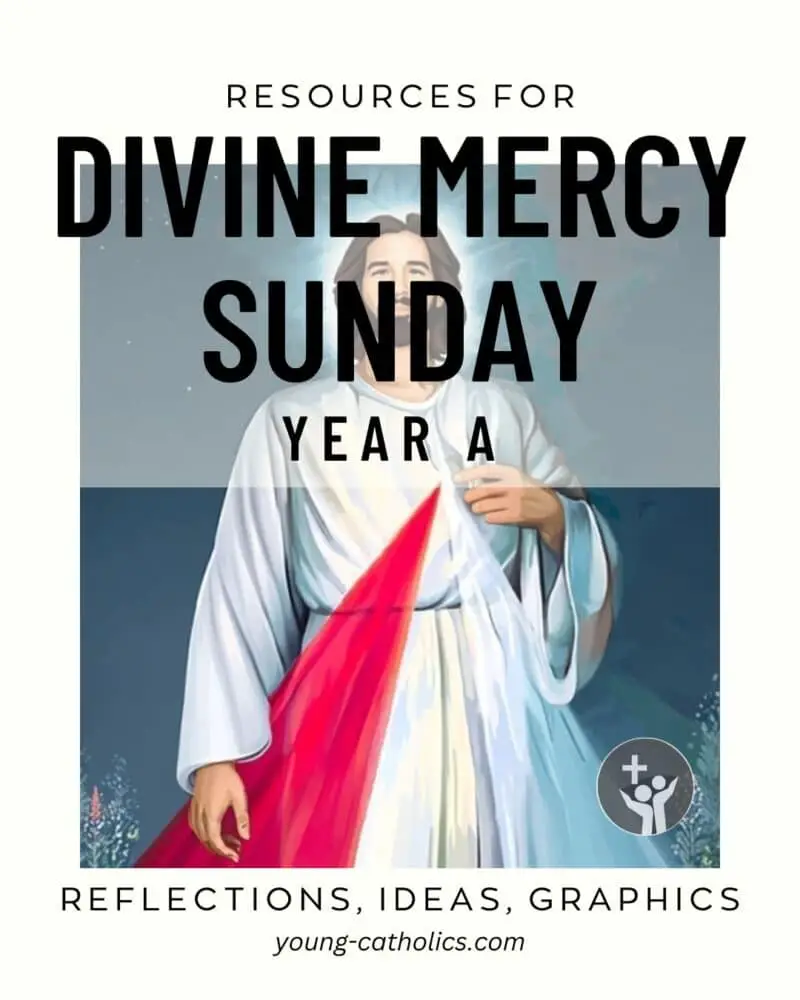
Faith That Brings Life
The 2nd Sunday of Easter Year A is also known as Divine Mercy Sunday. It is a day to remember that God’s mercy is for all people. The readings tell us about faith, hope, and the joy that comes from meeting the risen Jesus. They also remind us that believing in Him brings new life.
In the first reading, we hear about the early Christians. They lived together, shared what they had, and cared for those in need. Their lives were filled with prayer, worship, and love for one another. This shows how faith can change the way we live each day.
The Gospel tells the story of Thomas. At first, he doubted the other disciples. When he saw Jesus, he believed. Jesus said that those who believe without seeing are blessed. The 2nd Sunday of Easter Year A invites us to trust Him even when we do not have all the answers.
Mass Readings for Divine Mercy Sunday Year A
- First Reading – Acts 2:42-47: The early Christian community was devoted to apostolic teachings, fellowship, sharing meals, and prayer. United, they shared resources, sold possessions to support the needy, and worshiped together, growing daily in number and favor.
- Responsorial Psalm – Psalm 118: Israel, Aaron’s descendants, and those who fear the Lord proclaim His steadfast love forever. In distress, He frees and strengthens us. The rejected stone becomes the cornerstone.
- Second Reading – 1 Peter 1:3-9: We’re reborn into a living hope and imperishable inheritance through Christ’s resurrection. Our faith, tested by trials, is precious and will bring praise at Christ’s revelation. Unseen, He is loved, believed in, and brings us inexpressible joy.
- Gospel – John 20:19-31: In a locked room, the resurrected Jesus appeared to his disciples, offering peace and showing his wounds, which brought them joy. He empowered them with the Holy Spirit and the authority to forgive sins. Thomas, absent initially, doubted their testimony. Later, Jesus appeared again, inviting Thomas to touch his wounds, leading to Thomas’ declaration of faith. Jesus blessed future believers who wouldn’t see yet believe. These events were recorded to affirm faith in Jesus as the Christ.
Upcoming dates: April 12, 2026, April 8, 2029, April 4, 2032
Jesus said to them again, “Peace be with you. As the Father has sent me, so I send you.”
John 20:21
Themes for Divine Mercy Sunday Year A
Divine Mercy Sunday Year A celebrates God’s mercy and the hope we receive through Christ’s resurrection. The readings highlight forgiveness, faith, and the joy of new life in Christ.
- God’s Mercy and Forgiveness: Jesus gives His disciples the power to forgive sins, showing God’s endless mercy. This gift invites us to seek forgiveness and extend mercy to others.
- Faith Amid Doubt: Thomas doubts the resurrection until he sees Jesus’ wounds. His journey shows that faith can grow through questions and honest seeking.
- Peace Through Christ: Jesus greets His disciples with peace, calming their fear. His presence brings peace that conquers fear and doubt.
- The Power of Community: The early Christians prayed, shared resources, and grew together in faith. This shows the importance of supporting each other in living out the Gospel.
- Hope Through Resurrection: Christ’s resurrection gives us a living hope and an eternal inheritance. This hope sustains us, even through trials and challenges.
- Joy in Belief: Although we cannot see Jesus, faith brings joy and purpose. Believing without seeing is blessed, as Jesus teaches Thomas.
Divine Mercy Sunday Year A invites us to embrace God’s mercy and live in hope and faith. It calls us to be merciful, to believe with joy, and to support each other as a community of believers.
Resources for Divine Mercy Sunday Year A
Sunday April 12, 2026
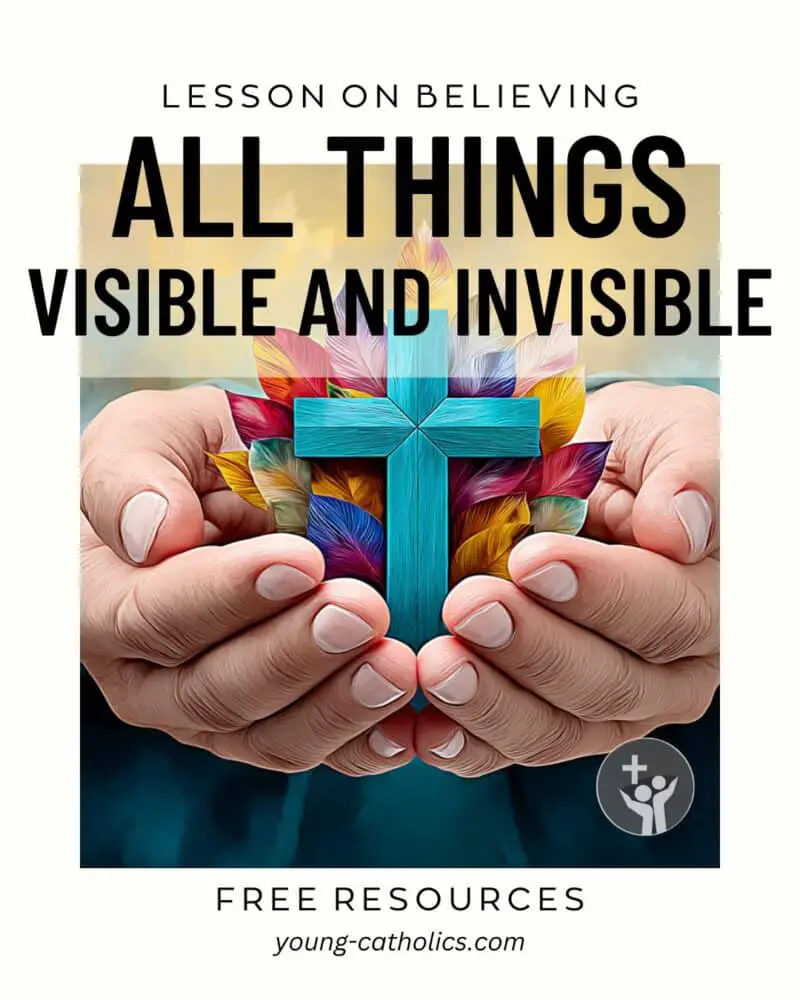
All Things Visible and Invisible – A Lesson Plan on Believing
This lesson plan helps youth explore faith and belief through the story of Thomas, which is featured in the Gospel for Divine Mercy Sunday Year A. Thomas struggled to believe in Jesus’ resurrection until he saw Jesus for himself. His story shows that doubt is a natural part of faith and that Jesus responds to our struggles with patience and love.
Divine Mercy Sunday Year A reminds us that Jesus meets us where we are, even in our doubts. He invites us to believe and grow in faith. This lesson encourages young people to be honest about their questions and to trust that God understands. Just as Thomas’ faith grew stronger, our belief can deepen as we seek and encounter Jesus.
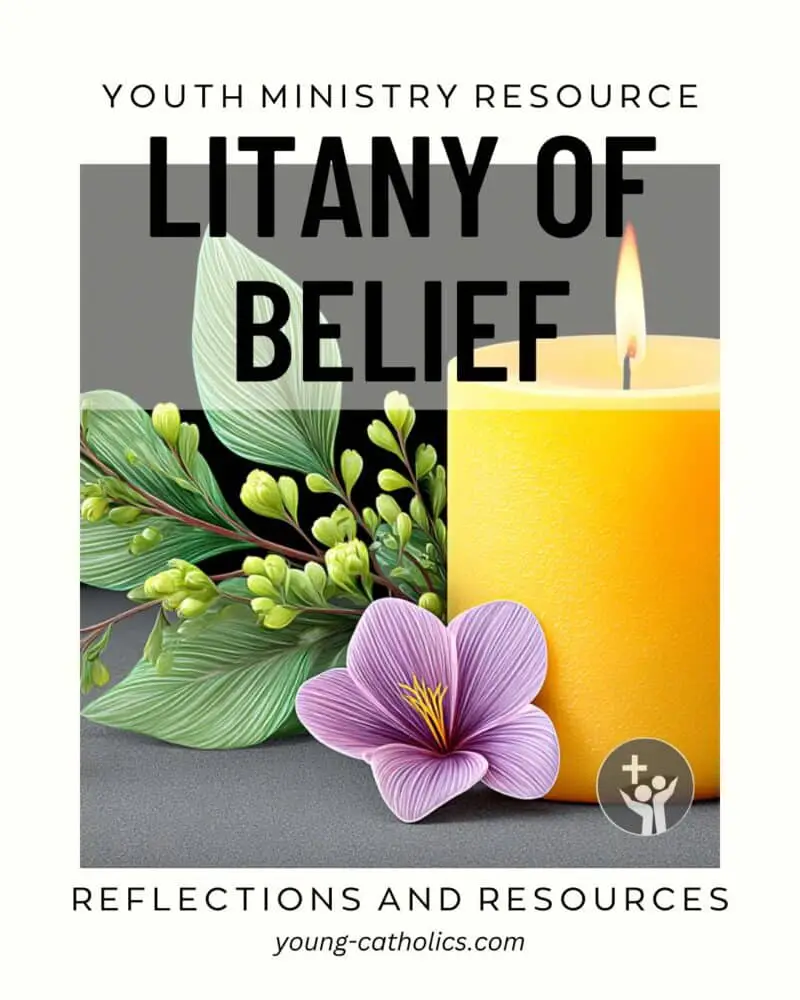
Litany of Belief
The Litany of Belief is a prayer that helps us trust God even when we struggle with doubt. It is inspired by the father’s plea for help in Mark and Thomas’s journey from doubt to faith in John’s Gospel. These stories remind us that it is normal to have questions and that Jesus meets us with patience and love.
This prayer is especially meaningful on Divine Mercy Sunday Year A, which reflects on Thomas’s encounter with the risen Jesus. His honest doubt led to a deeper faith when he declared, “My Lord and my God.” The Litany of Belief encourages us to bring our doubts to Jesus, trusting that He understands and will help us grow in faith.
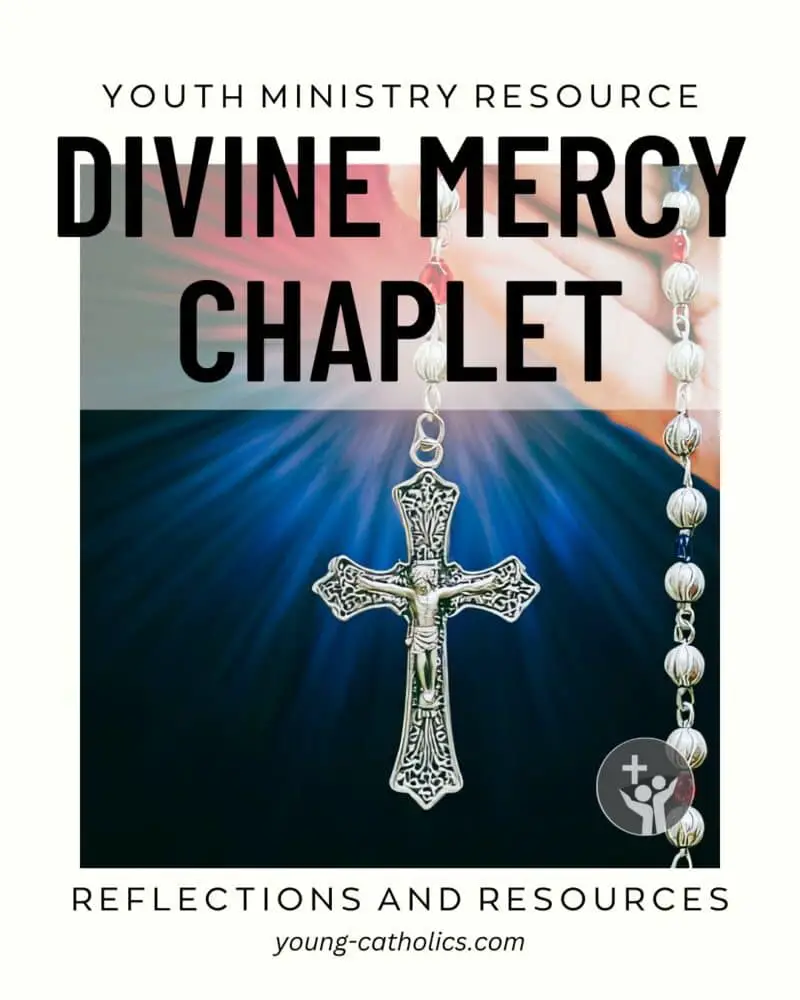
Divine Mercy Chaplet
The Divine Mercy Chaplet is a prayer that asks for God’s mercy through Jesus’ sacrifice. It was revealed to Saint Faustina Kowalska, who was called to spread this devotion. The chaplet reflects on Jesus’ Passion and reminds us to trust in His mercy and show mercy to others.
Divine Mercy Sunday Year A celebrates God’s endless mercy, as shown in Jesus’ Resurrection and His forgiveness of the disciples. Praying the Divine Mercy Chaplet helps us reflect on this mercy and grow in faith. It invites us to trust in God’s love and share that love with the world.
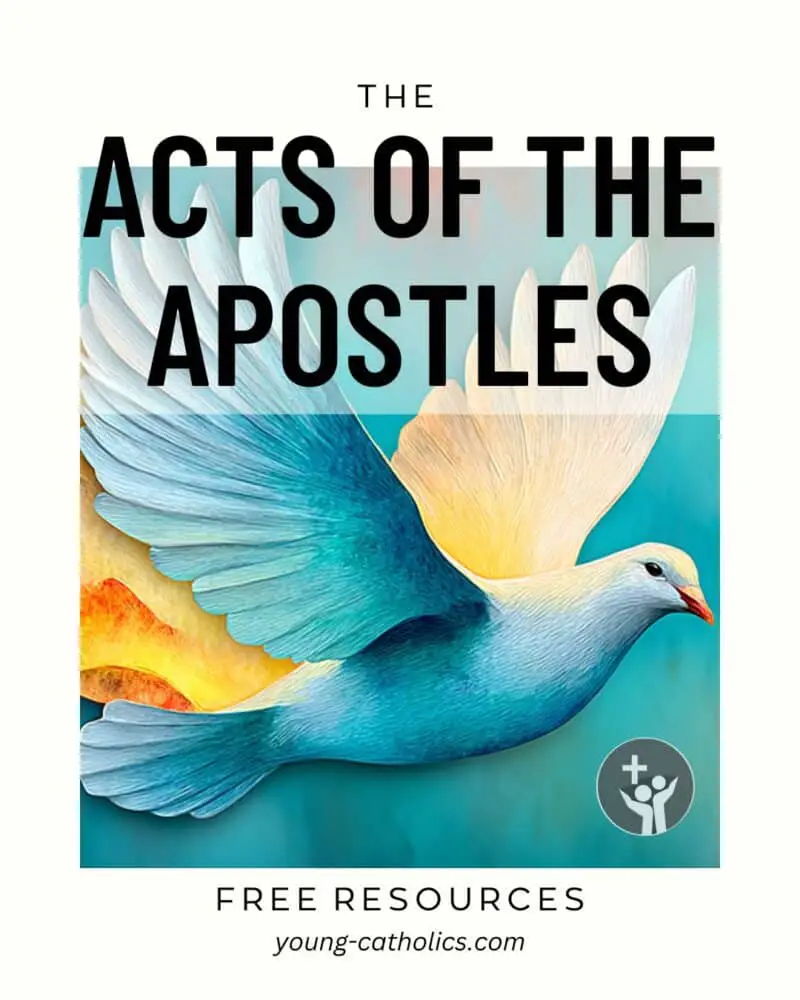
The Acts of the Apostles: Life in the Early Church
The Book of Acts shows how the Holy Spirit builds and guides the Church. In this passage, we see the believers living in unity, sharing resources, and staying faithful to the apostles’ teaching. Their life together reflects the Spirit’s work in forming a community of love and service. This is central to Acts’ theme of the Church’s mission.
For the 2nd Sunday of Easter Year A, this scene also shows the joy and fruit of the resurrection. The Church is not just a gathering but a living body, caring for each other and witnessing to the world. Their generosity and worship drew more people to Christ each day.

Psalm 118: God’s Enduring Mercy
Psalm 118 celebrates God’s steadfast love and deliverance. As part of the Hallel psalms, it was sung during festivals, reminding Israel of God’s saving acts. The image of the rejected stone becoming the cornerstone points to God’s surprising ways and faithfulness to His covenant. This psalm reassures worshipers that God’s mercy is forever.
For the 2nd Sunday of Easter Year A, this psalm connects the resurrection to God’s enduring plan. Just as the cornerstone was unexpected, Christ’s victory over death reveals God’s ultimate deliverance. It invites all people to trust in His strength and salvation.

The First Letter of Peter: Faith Tested and True
First Peter encourages Christians facing trials to stand firm in faith. This reading points to the living hope we have through Christ’s resurrection and the inheritance that cannot fade. The letter often speaks about perseverance, holiness, and the promise of salvation, giving believers courage in hardship.
For the 2nd Sunday of Easter Year A, these verses connect the joy of Easter with real-life challenges. Trials refine faith, making it more valuable than gold. Even without seeing Christ, believers love Him and rejoice in the promise of eternal life.

The Gospel of John: Believing Without Seeing
The Gospel of John presents Jesus as the eternal Word who brings life and light to the world. In this passage, the risen Lord appears to His disciples, bringing peace and sending them to continue His mission. The focus on belief without sight echoes the Gospel’s purpose: that readers may believe and have life in His name.
For the 2nd Sunday of Easter Year A, the story of Thomas reminds us that faith often grows through encounter and trust, not just sight. Jesus blesses those who believe without seeing, pointing to the generations of future disciples.
Homilies and Commentaries for Divine Mercy Sunday Year A
Sunday April 12, 2026
Agents of Divine Mercy
In his homily for Divine Mercy Sunday Year A, Bishop Robert Barron reflects on Jesus’ appearance to His disciples after the Resurrection. He explains that Jesus brings peace and shows His wounds, which reveal both the disciples’ sin and God’s mercy. Bishop Barron emphasizes that Jesus’ mercy is shown through compassion for human suffering. He invites listeners to see their own fears and sins in Jesus’ wounds and to accept His peace and forgiveness.
Bishop Barron also discusses Thomas’ doubt, noting that his honest questioning leads to the strongest profession of faith in the Gospels. He points out that Jesus does not reject Thomas but invites him to touch His wounds, showing that doubt can lead to deeper faith. Bishop Barron encourages believers to accept Jesus’ peace, confront their own sin, and live as agents of mercy in the world.
What Do We Mean by Mercy?
In his commentary for Divine Mercy Sunday Year A, Jeff Cavins explains that this feast celebrates God’s mercy meeting us in our struggles. He connects this to the early Church’s focus on the Apostles’ teaching, fellowship, breaking of bread, and prayer. Cavins shows how these practices bring God’s mercy into our lives, helping us grow in faith and community.
Cavins also reflects on the Gospel, where the risen Jesus appears to His fearful disciples and offers peace. He explains that Jesus meets us in our fears and brings mercy through forgiveness. Cavins highlights the Sacrament of Reconciliation as a powerful source of mercy shown in the readings for Divine Mercy Sunday Year A.
His Mercy Endures
In his commentary for Divine Mercy Sunday Year A, Scott Hahn explains that through Jesus’ Resurrection, we are given new life as children of God. He describes how the early Christians devoted themselves to the Apostles’ teaching, prayer, and breaking of bread, showing us how to live as a family of faith. Hahn highlights that the Apostles experienced the risen Jesus directly, receiving His peace and the mission to share God’s mercy.
Hahn also connects this Gospel encounter to the Mass. He points out that, like the disciples, we meet Jesus each Sunday, hear His Word, receive His peace, and worship Him as Lord. He explains that the Mass allows us to experience God’s mercy and renew our covenant with Him. Scott Hahn’s commentary on Divine Mercy Sunday Year A invites us to live in faith, love, and trust in the mercy we receive through Jesus.
What Jesus Didn’t Say to Thomas
In his homily for Divine Mercy Sunday Year A, Fr. Richard Rohr reflects on how Jesus responds to His disciples after the Resurrection. Instead of blaming them for abandoning Him, Jesus offers peace and forgiveness. Fr. Richard emphasizes that Jesus shows no need for punishment or resentment, revealing a God of love and mercy. This challenges us to rethink our own need for blame or revenge.
Fr. Richard also explores the role of Thomas, who represents all of us in our doubts and struggles. Jesus invites Thomas to touch His wounds, offering understanding instead of judgment. Fr. Richard explains that Divine Mercy Sunday Year A is about letting go of the past and embracing a future filled with forgiveness and love. This message invites us to receive God’s mercy and to become agents of mercy ourselves.
Reflection for Divine Mercy Sunday Year A
Divine Mercy Sunday Year A celebrates God’s mercy and invites us to trust in His love and forgiveness. The readings remind us of Jesus’ peace, forgiveness, and the importance of faith, even in times of doubt. They also highlight the need for community and the strength found in sharing our faith journey with others. These reflections help us understand and live out the message of mercy and hope.
Peace and Forgiveness
In the gospel for Divine Mercy Sunday Year A, the disciples are hiding in fear after Jesus’ crucifixion. They are scared and uncertain about their future. When Jesus appears to them, His first words are “Peace be with you.” This is more than a greeting. It is a message of comfort and reassurance. Jesus offers them peace to calm their fears and remind them that He is with them.
Jesus then shows them His wounds. These wounds are proof of His suffering, but they are also a sign of forgiveness. Despite being abandoned by His closest friends during His crucifixion, Jesus does not hold their fear or doubt against them. He forgives them and gives them peace. This shows that His mercy is greater than their failures.
Divine Mercy Sunday Year A reminds us that Jesus offers us the same peace and forgiveness. No matter what mistakes we have made, Jesus is ready to forgive us. He invites us to come to Him with our fears, doubts, and sins. We don’t need to be perfect to receive His mercy.
We are also called to share this peace and forgiveness with others. Just as Jesus forgave His disciples, we are asked to forgive those who have hurt us. By doing this, we bring His peace into our relationships and our world. Divine Mercy Sunday Year A challenges us to be instruments of peace and mercy.
Doubting Thomas
Thomas was not with the other disciples when Jesus first appeared. When they told him that they had seen the Lord, he doubted their words. Thomas wanted proof. He said he would not believe until he saw and touched Jesus’ wounds. This moment of doubt is not about weakness but about honest questioning. Thomas wanted to be sure that it was truly Jesus.
When Jesus appears again, He invites Thomas to see and touch His wounds. This act of love and patience helps Thomas move from doubt to faith. Thomas then makes a bold declaration of faith, calling Jesus his Lord and God. His doubt leads him to a deeper and stronger belief.
Divine Mercy Sunday Year A shows that doubt is part of the journey of faith. Jesus does not reject Thomas for his doubts. Instead, He meets him where he is and helps him believe. This teaches us that questioning and seeking are normal in our faith journey. Jesus is patient with our struggles and invites us to come closer to Him.
Jesus also blesses those who believe without seeing. This blessing is for all of us who have not seen Jesus in person but still believe in Him. Divine Mercy Sunday Year A encourages us to trust in Jesus’ presence and love, even when we don’t have physical proof.
The Scars Remain
When Jesus appears to His disciples after His resurrection, He still has the scars from His crucifixion. These scars are a reminder of His suffering and sacrifice. But they are also a sign of victory because they show that He has overcome death. Jesus carries His scars with Him, even in His risen body.
This teaches us that resurrection does not erase suffering. Jesus is alive, but the marks of His pain remain. He does not hide them but shows them to His disciples. By doing this, He invites them to see His love and sacrifice. He also shows them that suffering is part of the path to new life.
Divine Mercy Sunday Year A reminds us that we, too, carry our own scars. These scars may come from physical pain, emotional wounds, or struggles in life. Following Jesus does not mean our pain is erased. But it does mean that our suffering can lead to new life and hope.
Jesus understands our pain because He went through it Himself. He invites us to bring our wounds to Him and find healing. Our scars become a part of our story of faith. Divine Mercy Sunday Year A encourages us to trust that Jesus can bring good even from our deepest wounds.
The Importance of Community
The first reading and the gospel for Divine Mercy Sunday Year A both highlight the importance of community. The early Christians devoted themselves to the apostles’ teachings, fellowship, and prayer. They shared their resources and took care of each other’s needs. This strong sense of community helped them grow in faith and in number.
In the gospel, the disciples are gathered together in fear and uncertainty. Jesus appears to them as they are united in one place. His presence brings them peace, courage, and purpose. Thomas misses the first encounter because he is not with them. But when he joins the community, he experiences the risen Lord and moves from doubt to faith.
This shows that faith is not meant to be lived alone. Divine Mercy Sunday Year A teaches us that community is essential for growing in faith. We support each other, learn from each other, and share our joys and struggles. Being in community helps us encounter Jesus in new ways.
We are called to build and strengthen our faith communities. This means being present for one another, praying together, and sharing what we have. Divine Mercy Sunday Year A invites us to create communities of mercy, love, and hope, just as the early Christians did.
Divine Mercy Sunday Year A calls us to embrace God’s mercy and extend it to others. It encourages us to carry our scars with faith, trust in Jesus’ presence, and support one another in community. May we grow in faith and love, sharing God’s mercy with the world.
Prayer
Lord Jesus, on this Divine Mercy Sunday Year A, we thank You for Your mercy and love. Help us to receive Your forgiveness and to forgive others. Give us the courage to trust in You, even when we have doubts. Unite us as a community of faith and love. Amen.
Reflection Questions for Divine Mercy Sunday Year A
- How can I accept Jesus’ peace in my heart and life?
- Do I believe in Jesus’ forgiveness, even when I feel unworthy?
- How can I show mercy and forgiveness to others?
- What doubts do I struggle with in my faith journey?
- How can I grow in faith without needing physical proof?
- What scars am I carrying, and how can I find healing in Jesus?
- How can my own struggles help me grow closer to Jesus?
- Why is community important in my faith journey?
- How can I better support my faith community?
- What does God’s mercy mean to me, and how can I share it with others?
Social Media Graphics and Bulletin Artwork
Rays of Mercy and Peace

Share the message of God’s mercy this 2nd Sunday of Easter with this beautiful image. It is perfect for parish bulletins, newsletters, or other ministry materials. Let it inspire your community to trust in Jesus and welcome His peace.
This artwork is available for download to help spread the joy and hope of the Easter season.
Paid subscribers may download a large copy this digital artwork without watermarks, suitable for use in bulletins, social media, newsletters, etc., free of charge by clicking here. You must be logged in as a paid subscriber to access the file.
Only current paid subscribers have the rights to use the artwork.
Music Suggestions for Divine Mercy Sunday Year A
Sunday April 12, 2026
These music selections reflect the themes of mercy, forgiveness, faith, and trust found in the readings for Divine Mercy Sunday Year A. They celebrate God’s mercy and the hope we receive through Jesus’ Resurrection. Some songs express trust in Jesus and the peace He offers, while others focus on faith even in times of doubt. The music invites us to experience God’s love and to share that love with others. These selections are a meaningful way to enhance worship and reflection on this special day.
- Alleluia! Alleluia! Hearts to Heaven
- Amazing Grace by Chris Tomlin, Louie Giglio & John Newton
- Because He Lives by Matt Maher
- O Breathe on Me, O Breath of God by Edwin Hatch
- Chaplet of Divine Mercy by Steve Angrisano & Sarah Hart
- From the Inside Out by Hillsong United
- Give Thanks to the Lord by Steve Angrisano & Brian Green
- Jesus, I Trust in You by Sarah Hart & Angus McDonell
- Love Has Come by Matt Maher
- Mercy by Matt Redman
- The Jesus Song by Tom Booth
- There’s a Wideness in God’s Mercy by Fredrick William Faber
- Three Days by Gustav T. Holst, M.D. Ridge & Jeffrey Honoré
- We Walk by Faith by Marty Haugen
- With the Lord There Is Mercy by Rick Modlin
- Your Grace Is Enough by Matt Maher
Music directors and musicians are encouraged to try these selections for Divine Mercy Sunday Year A. These songs can inspire faith and connect the congregation to the themes of mercy and hope. If you have other songs that fit these themes, please share your suggestions in the comments.
Questions and Answers
What date is Divine Mercy Sunday Year A?
The next date is Sunday April 12, 2026.
For other years see the links below:
Divine Mercy Sunday Year B
Divine Mercy Sunday Year C
What are the Mass readings for Divine Mercy Sunday Year A?
The Catholic Mass readings for are:
First Reading – Acts 2:42-47: A Devoted Christian Community
Responsorial Psalm – Psalm 118: The Lord’s Steadfast Love Endures Forever
Second Reading – 1 Peter 1:3-9: A Living Hope through Christ
Gospel – John 20:19-31: Believing Without Seeing
What is the main message of Divine Mercy Sunday Year A?
Divine Mercy Sunday Year A celebrates God’s mercy and forgiveness through Jesus’ Resurrection. It invites us to trust in God’s love and to show mercy to others.
Why did Jesus show His wounds to the disciples?
Jesus showed His wounds to prove that He was truly risen. The wounds also remind us of His sacrifice and the depth of His love and forgiveness.
Why did Jesus breathe on the disciples?
Jesus breathed on the disciples to give them the Holy Spirit. This empowered them to continue His mission and forgive sins.
What is the meaning of peace be with you?
Jesus’ greeting of peace is more than a wish for calm. It is a gift of wholeness and reconciliation, showing that He forgives them and restores their relationship.
Why did Thomas doubt the Resurrection?
Thomas doubted because he was not present when Jesus first appeared. He wanted physical proof to believe, which shows that faith can be a journey with questions and growth.
What does Jesus’ response to Thomas teach us?
Jesus did not criticize Thomas for his doubt. Instead, He met him with patience and understanding, showing that honest questions can lead to deeper faith.
How does Divine Mercy Sunday Year A help us understand forgiveness?
Divine Mercy Sunday Year A shows that God’s mercy is endless. Jesus gives the disciples the power to forgive, inviting us to seek and offer forgiveness.
Why is community important in the readings?
The early Christians prayed, shared resources, and supported each other. This shows that faith grows in community and that we need each other’s help and encouragement.
How can we apply the message of peace in our lives?
We can bring Jesus’ peace to our families, workplaces, and communities by forgiving others, seeking reconciliation, and trusting in God’s care.
What does Blessed are those who have not seen and have believed mean?
Jesus praises those who believe without physical proof. This encourages us to trust in Him through faith and the testimony of others.
How can we live out Divine Mercy Sunday Year A?
We can live out Divine Mercy Sunday Year A by receiving God’s forgiveness, forgiving others, showing mercy, and sharing our faith with love and compassion.
Celebrating Mercy and Faith
Divine Mercy Sunday Year A reminds us of God’s mercy and forgiveness through Jesus. In the Gospel, Jesus appears to His disciples, offering peace and the gift of forgiving sins. Thomas doubts until he sees Jesus, but his faith is renewed when he touches Christ’s wounds. This shows us that questioning can lead to deeper belief.
The early Christian community, as described in Acts, lived in unity and shared what they had. Their example teaches us the importance of community and caring for others. It shows how faith grows stronger when shared and supported by others.
Divine Mercy Sunday Year A invites us to trust in God’s mercy, grow in faith, and support one another. It calls us to forgive as we have been forgiven and to live in hope because of Christ’s resurrection. Through faith and mercy, we find peace and joy in the risen Lord.
Your Turn
Divine Mercy Sunday Year A invites us to reflect on God’s mercy and the power of faith. The readings show us the importance of forgiveness, community, and hope. Take time to think about what these messages mean in your life. Consider how you can show mercy, grow in faith, and bring hope to others.
We would love to hear your thoughts and experiences related to Divine Mercy Sunday Year A. How have you felt God’s mercy in your life? In what ways have you struggled with doubt but found renewed faith? Share your reflections in the comment section. Your story could inspire others on their faith journey.

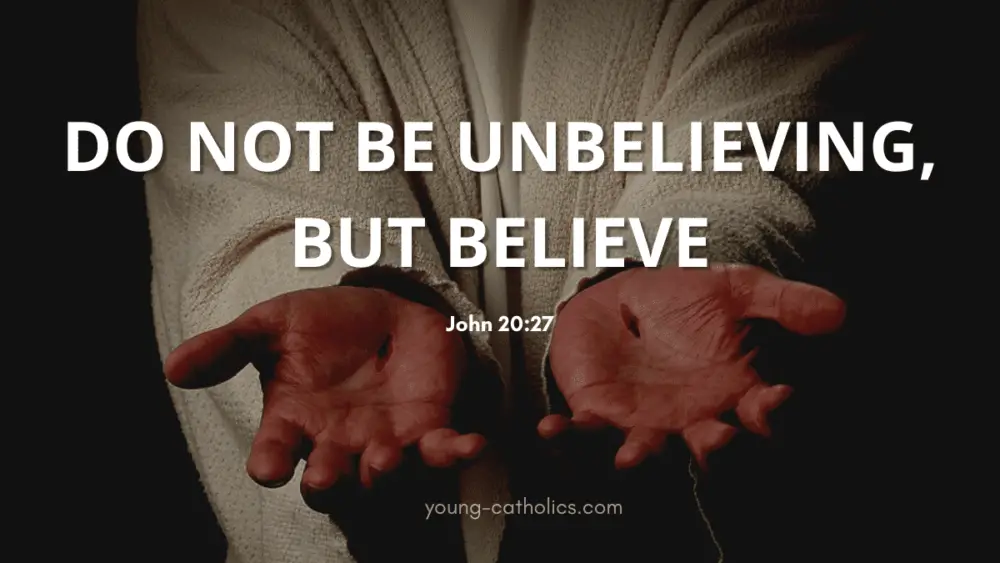

Leave a Reply